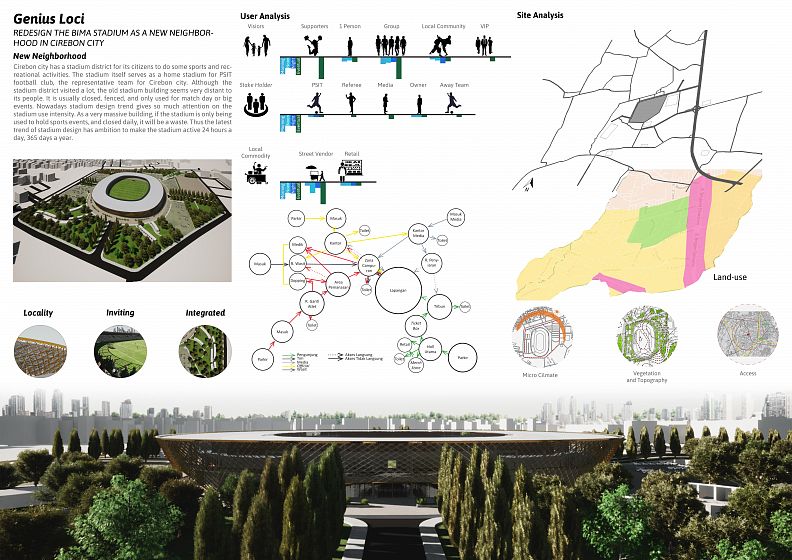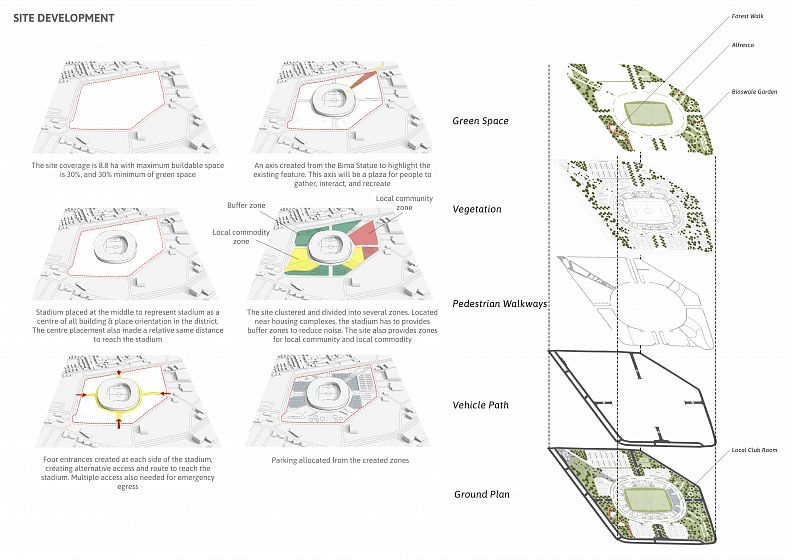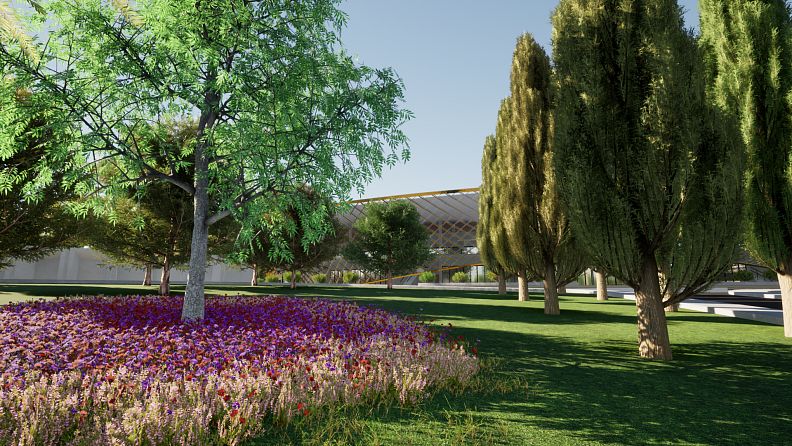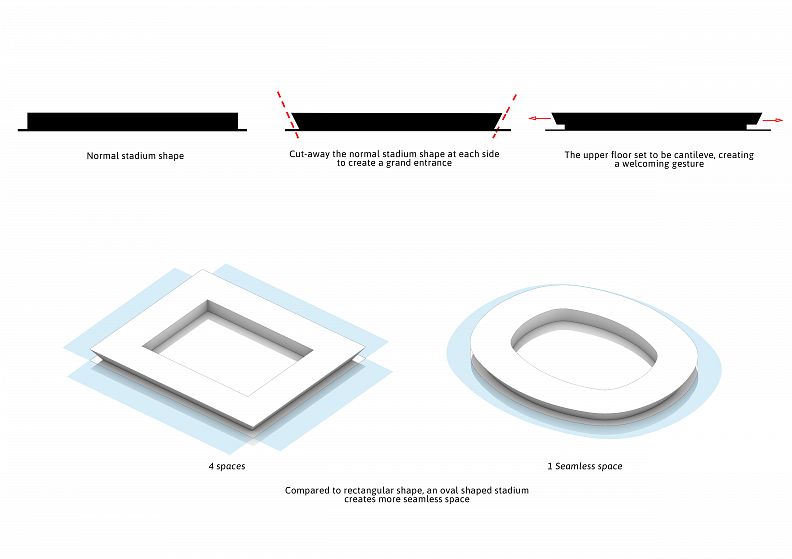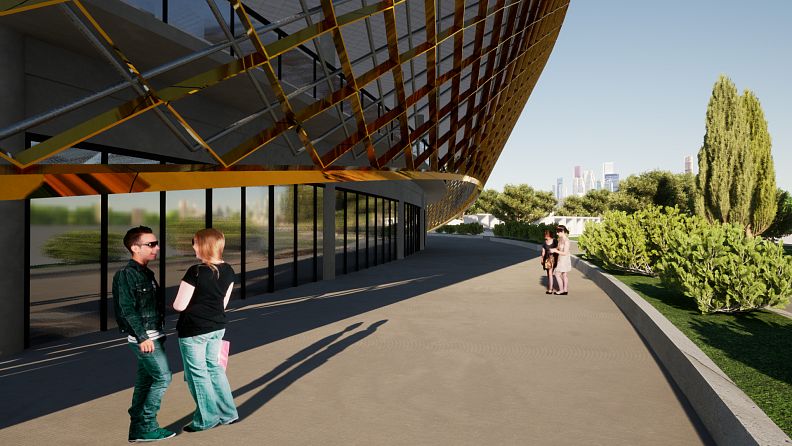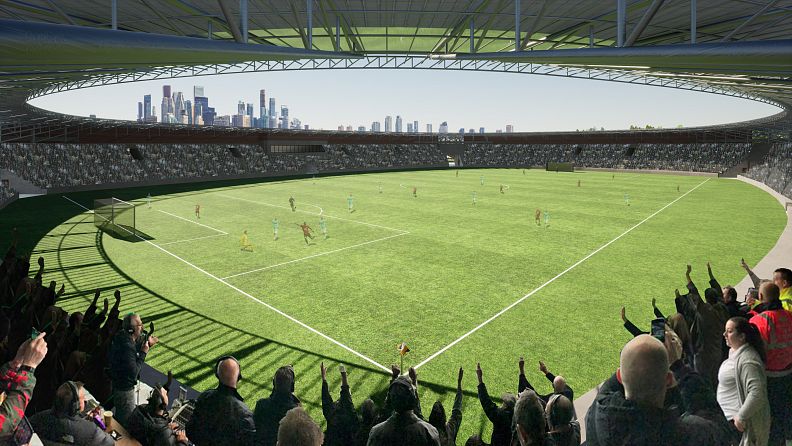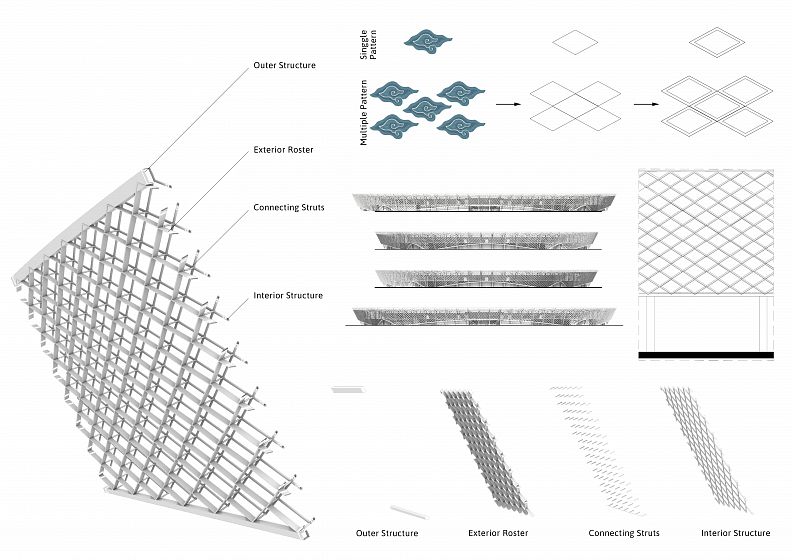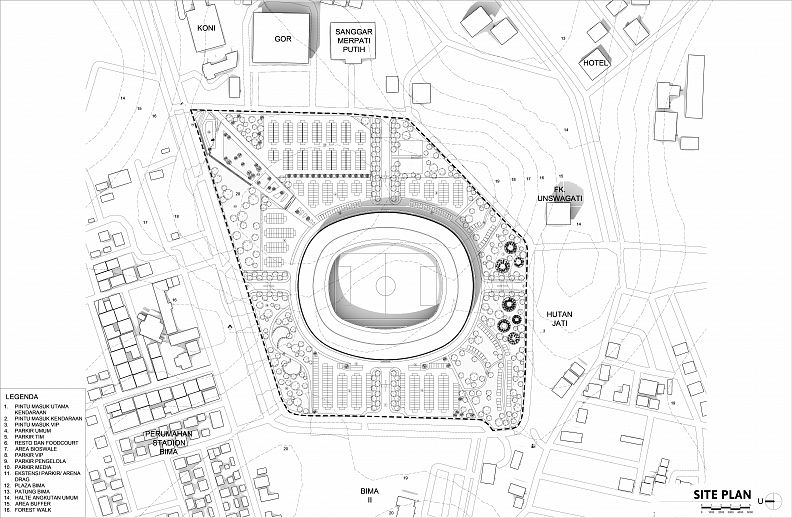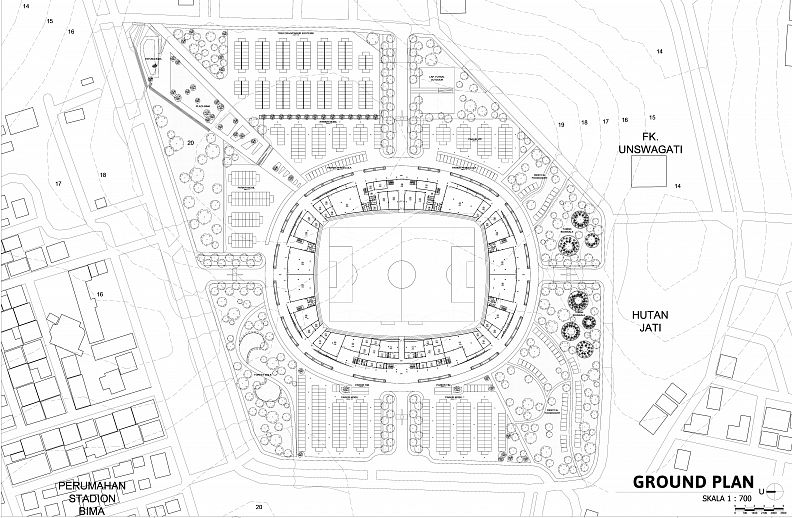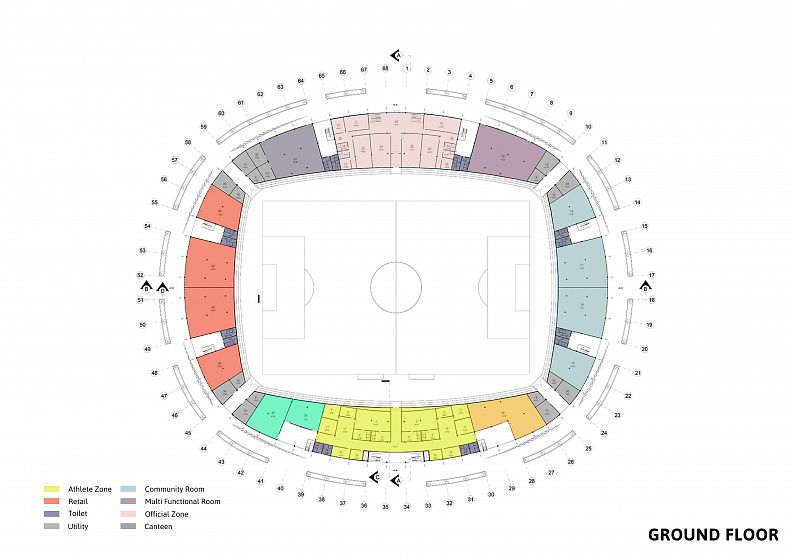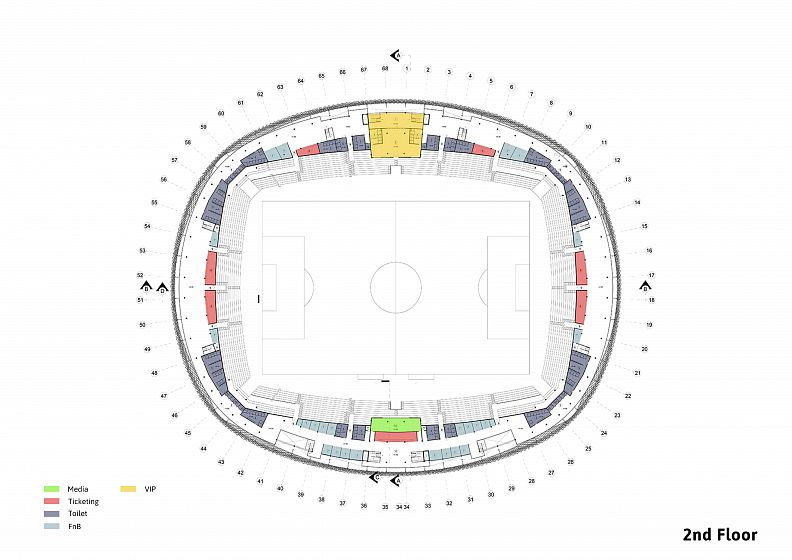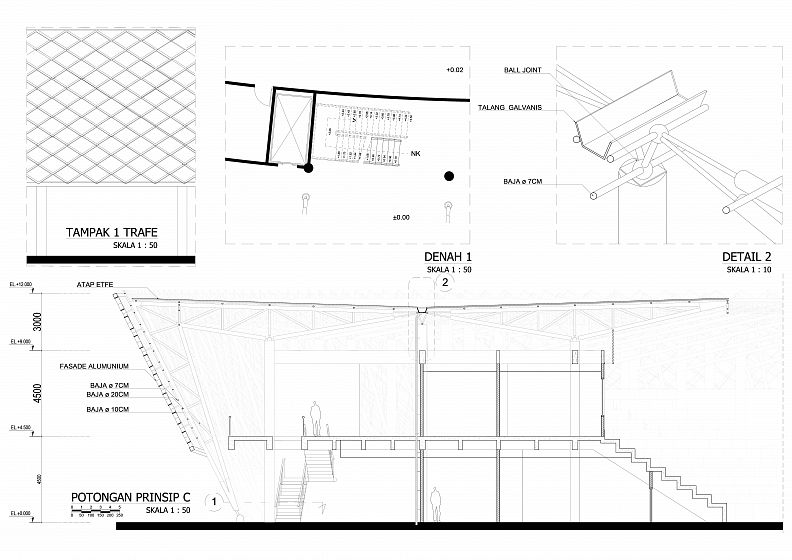Genius Loci. Re-design the Bima Stadium as a New Neighborhood in Cirebon City

Project idea
Cirebon city has a stadium district for its citizens to do some sports and recreational activities. The stadium itself serves as a home stadium for PSIT football club, the representative team for Cirebon city. Although the stadium district visited a lot, the old stadium building seems very distant to its people. It is usually closed, fenced, and only used for match day or big events. Nowadays stadium design trend gives so much attention on the stadium use intensity. As a very massive building, if the stadium is only being used to hold sports events, and closed daily, it will be a waste. Thus the latest trend of stadium design has ambition to make the stadium active 24 hours a day, 365 days a year.
Located near housing complexes in suburb, the stadium has potency to aim such ambitions, as it has many local activities to be provided in the stadium district.
Stadium as a Neighborhood
Stadium as a Neighborhood means it must be inseparable of its neighbor and carry its inherent attributes. People and local community. The new stadium will be a "backyard" to play, interact, and do daily activities.
Project description
The design concept derived into three strategies; Integrated, inviting, and locality.
1. Integrated
The new stadium design focus on daily activities for its neighborhood and local communities such as playing, interacting, recreating, even doing local business, without neglecting its basic function as a home stadium for PSIT. By listing the activities and its characteristics, programs are separated into outside and inside the stadium.
Outside the stadium, programs are clustered by buffer zone (as a respond to the surrounding housing complexes), local community zone, and local commodity zone. There is also a plaza connecting the giant statue (existing) and the stadium for people to interact.
The stadium itself consists of two level, ground floor and upper floor. The ground floor mainly allocated for local community such as local club rooms, multi functional rooms, gym, and retails. The rests are athlete area, owner area, and utilities like toilets. Meanwhile, the entrances (gates) to tribunes are on the upper floor. This zoning method creates a smoother transition between inside and outside of the stadium on the ground floor, erasing the bold boundary between them, and makes the stadium more welcoming.
2. Inviting
The new stadium provides variety of activities to gain people interest from all ages, gender, and ability. Programs like plaza, buffer zone, and local community area tends to attract people to do activities. Even the stadium itself actually attracts people. The new design should enhance it by giving more experiences in it.
- Buffer zone designed like a forest walk for people to recreate. To make it more interesting, the promenade on forest walk lifted, creating spaces between. Some buffer zones also designed as a bioswale garden with colorful plantation.
- Local commodities like food are also attract people. Local food stands designed in a row, creating a food festival vibes.
- The parking lot designed so it can be a drift track for drift club to train daily.
3. Locality
The new stadium design adopt local pattern of Batik Mega Mendung for its façade design. The main intention is to show local identity and brings associative values to people, further develops sense of belonging.
Technical information
Building Envelope
Sustainability is one of main concerns for massive building like stadium. To lower energy use and energy waste, building envelope are made by roster on its façade, creating natural ventilation and natural lighting. The roster shape is adopting the simplified local pattern of Batik Mega Mendung (diamond shape). The diamond roster use aluminum as its material, supported by outer structure and connected to the interior structure using steel pipe structure. On top of the stadium, roof slopes are directed so it can collect rain water for toilets and field watering.
Main Structure
The stadium used a long span structure to avoid a view disturbance from tribune to the field by columns. The long span structure are made from pipe steel and connected with ball joints. Mainly, the structure are separated in the middle to form a space for gutter placement. The main structure are connected with plane truss system on the roof. The rest (floor structure) are using a concrete beam.
Co-authors
-
